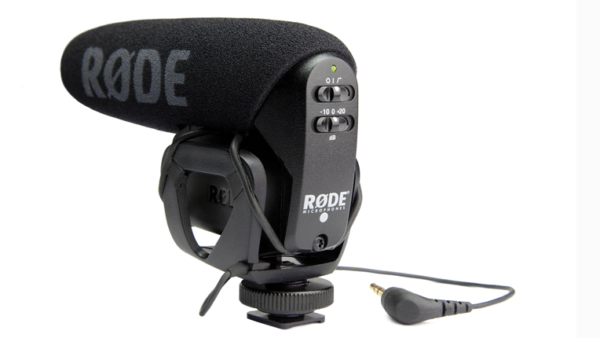Smart Homes and HVAC: How to Integrate Heating and Cooling Into Smart Home System easily
Smart Homes and HVAC : In the age of rapid technological advancement, the concept of a “smart home” has transcended science fiction and become a tangible reality for homeowners worldwide. One of the most significant areas where smart technology has made its mark is in the realm of heating, ventilation, and air conditioning (HVAC) systems. The integration of HVAC into smart home systems has not only enhanced comfort but also elevated energy efficiency and control. In this article, we will delve into the exciting world of smart homes and HVAC, exploring the benefits, key components, and essential steps to seamlessly integrate heating and cooling into your smart home ecosystem.
Understanding the Foundations of Smart HVAC
In the era of smart homes, the integration of heating and cooling systems into your home’s digital infrastructure is nothing short of transformative. Before delving into the practical aspects of setting up your smart HVAC system, it’s crucial to grasp the fundamentals of this technology. HVAC, short for Heating, Ventilation, and Air Conditioning, is at the core of maintaining a comfortable and healthy indoor environment. Traditional HVAC systems have evolved into smart systems by incorporating cutting-edge technology, making them more efficient, customizable, and responsive to your needs.
One pivotal component of smart HVAC systems is the smart thermostat. These devices represent a monumental leap from conventional thermostats, as they come equipped with sensors and Wi-Fi connectivity. Smart thermostats not only allow you to precisely control the temperature but also possess advanced features such as learning your heating and cooling preferences over time. This adaptability maximizes comfort while simultaneously delivering substantial energy savings by optimizing temperature settings based on your daily routine. Whether you’re at work, on vacation, or simply lounging at home, smart thermostats ensure that your heater system operates at its peak efficiency, minimizing energy waste and reducing utility costs. In the forthcoming sections, we’ll delve deeper into the realm of smart thermostats, exploring how they function and offering guidance on selecting the most suitable one for your smart home ecosystem.
Another fundamental aspect to comprehend within the realm of smart HVAC is the concept of connectivity and compatibility. Smart HVAC systems rely on seamless communication between various components to function harmoniously. This interconnectedness enables remote control and monitoring of your heating and cooling systems through smartphones or other smart devices. It’s essential to ensure that the devices you choose for your smart HVAC setup are compatible with one another and can communicate effectively. Compatibility often hinges on the use of common communication protocols like Wi-Fi, Zigbee, or Z-Wave. When devices can effectively communicate, they can collaborate efficiently, creating a synchronized and efficient smart home environment.
Building Your Smart HVAC Ecosystem
Building a robust smart HVAC ecosystem is the next crucial step on your journey to transforming your home into a smart and efficient living space. Once you’ve gained a solid understanding of the fundamentals of smart heater technology, it’s time to select the right components and set up your system for optimal performance.
The selection of components is a pivotal stage in creating your smart HVAC ecosystem. This step requires careful consideration of your specific heating and cooling needs and the compatibility of devices with your existing infrastructure. Start by evaluating your HVAC equipment, such as furnaces, air conditioners, heat pumps, and ductwork. Determine whether your existing systems can seamlessly integrate with smart technology or if you need to upgrade certain components. When selecting smart thermostats or other smart HVAC devices, consider factors like brand compatibility, communication protocols, and the availability of features that align with your preferences, such as learning capabilities, voice control, or geofencing. Taking the time to choose the right components sets the foundation for a system that not only meets your comfort needs but also optimizes energy efficiency.
Installation and setup are critical phases in bringing your smart HVAC ecosystem to life. Depending on your chosen components, installation may involve the services of a professional HVAC technician or be a DIY endeavor. It’s essential to follow manufacturer guidelines and recommendations to ensure proper installation and functionality. Smart thermostats, for example, often require precise wiring and configuration. During setup, you’ll connect your devices to your home’s Wi-Fi network and configure settings such as temperature thresholds, schedules, and user preferences. Once your components are installed and set up correctly, you’ll have the power to control your HVAC system remotely, view real-time data, and adjust settings as needed through a dedicated mobile app or web interface. This level of control not only enhances convenience but also allows for on-the-fly adjustments to accommodate changing weather conditions or unexpected changes in your daily routine.
Automation and control are where the magic truly happens in your smart HVAC ecosystem. These systems can adapt to your preferences, habits, and even the weather forecast to ensure your home’s climate remains just as you like it. Smart thermostats, for instance, can learn your schedule and adjust the temperature accordingly, ensuring that your home is comfortable when you’re present and conserving energy when you’re away. Additionally, automation can extend to other aspects of your smart home, such as integrating your heater system with smart lighting and blinds to maximize energy efficiency. By automating your smart HVAC system, you’re not only enhancing comfort and convenience but also making a significant contribution to reducing your energy consumption and environmental impact.
Maximizing Benefits: Energy Efficiency and Convenience
Energy savings are one of the most compelling reasons homeowners embrace smart HVAC technology. These systems have the power to substantially reduce energy consumption and, consequently, lower utility bills. Smart thermostats, in particular, play a pivotal role in this regard. Their ability to adapt to your schedule, occupancy patterns, and even local weather conditions allows them to optimize heating and cooling, minimizing unnecessary usage. By avoiding overuse and reducing energy waste, you not only save money but also contribute to a more sustainable environment by reducing your carbon footprint. It’s worth noting that some utility companies even offer incentives or rebates for installing smart thermostats, further sweetening the deal for environmentally conscious consumers.
Enhanced comfort is another key benefit of a smart HVAC system. Imagine returning home on a sweltering summer day to a perfectly cooled house or stepping into cozy warmth during a chilly winter evening, all without lifting a finger. Smart heater technology makes these scenarios a reality. With the ability to control your heating and cooling remotely through your smartphone or set automated schedules, you can ensure your home’s climate is always ideal. Some advanced systems can even detect when you’re on your way home and adjust the temperature accordingly, so you never have to experience discomfort. Moreover, these systems can provide zone-based heating and cooling, allowing different areas of your home to have individualized temperature settings, enhancing comfort further.
To maintain the benefits of your smart HVAC system over time, it’s crucial to consider troubleshooting and maintenance. Like any technology, smart HVAC components may encounter occasional issues, from connectivity problems to sensor malfunctions. Familiarizing yourself with troubleshooting techniques or having access to manufacturer support can help you swiftly resolve these issues. Additionally, regular maintenance is vital to ensure your system operates efficiently and reliably. This may include tasks such as changing air filters, cleaning sensors, and scheduling professional HVAC inspections. By staying proactive with maintenance, you’ll not only extend the lifespan of your smart HVAC components but also continue to enjoy the energy savings and convenience they offer for years to come.
Conclusion
Embracing the integration of heating and cooling into your smart home system is a forward-thinking move that promises a more comfortable, efficient, and convenient lifestyle. By understanding the basics, carefully selecting compatible components, and optimizing your system for energy efficiency and comfort, you can transform your home into a true smart haven. As technology continues to evolve, so will the possibilities for smart home HVAC systems, offering homeowners even greater control over their indoor environments while contributing to a sustainable future. So, take the first step towards a smarter, more comfortable home – embark on your smart HVAC journey today.








